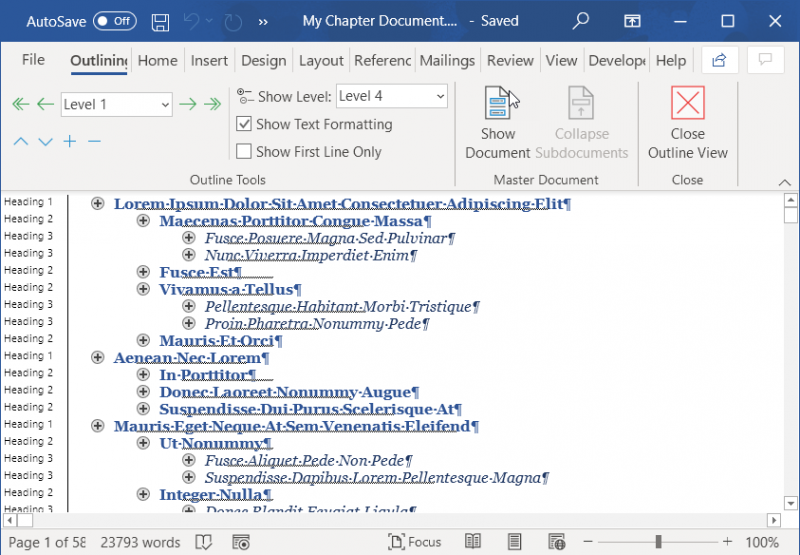

For example, instead of manually formatting a paragraph to have the indentation, line spacing, font, borders, and other characteristics that you desire, you can achieve the same effect by applying a pre-defined style that embodies those characteristics. Stay away from Odd Page and Even Page section breaks unless you need a new chapter to always start on an odd page number (or something like that).Ī style is a collection of format settings that can be applied collectively to paragraphs or characters. If you have a wide table that can only be displayed properly with a landscape page orientation, then you put section breaks before and after the table so that the section including the table can be switched to landscape mode without affecting other parts of the document.īe careful putting in section breaks – when you delete the break, the properties of the page following the section break flow up through the document so you could end up with all landscape pages. You might find that additional sections are needed within the body of your work. Use Continuous if you want a special section in the middle of a page. Use Next Page if you want the new section to start on a new page. Section Breaks - Next Page or Section Breaks - Continuous to create a section break. If you want to change any those characteristics in mid-document, then you must insert a section break at that point in the document. In Word, page properties such as margins, the number of columns of text, and the position and style of page numbers are applied throughout a section of the document. Section breaks are essential for large complicated documents, especially if you want page numbers in different locations, different margins, different number of columns on different pages. Line Numbers: You can number each line of the document (useful for legal documents and scripts) and those line numbers can start over on each page or section or run continuously through the document.īorders: you can set a border for every page in the document, for just this section, for the first page of this section, or for every page except for the first page. Headers and footers: you can set a different first page and/or different odd and even pages. The alternative is to manually create sections ahead of time and then pick the desired orientation for each section. When you want to switch back to the previous orientation, return to this dialog and pick the desired orientation for this point forward again.

If you select “this point forward”, Word will insert a Next Page Section Break. Get really good ideas every day: Subscribe to the Daily Dispatch and Weekly Wrap (it’s free).You can change the page orientation for the whole document or just for this point forward. Illustration © Subscribe to Attorney at Work

However, once you reset your default fonts, at least your days of adjusting the fonts every time you start a document are behind you.Ĭlick here to read more of Deborah’s Microsoft Office tips. This doesn’t affect documents you receive from others or any existing documents you created. Now Every New Document You Start in Word Will Use the Microsoft Office Fonts You Prefer Save everything you’ve done by clicking Set as Default on the Design tab (next to the Colors and Fonts buttons). Word will ask whether you want to make this the default for this document only or for all future documents based on the Normal template. Select +Body and the size text you want, then click Set as Default in the lower left-hand corner. Go to the Home tab and click on the small launcher arrow in the lower right-hand corner of the font section to go to the Font dialog box. Once you reset the font style, the default text size is an easy fix, too. Then you can name your preferred font set before clicking Save. Just use the drop-down for each to find a font more to your liking. This is where you set the two Styles I told you about earlier, +Body and +Headings, which in turn control basic settings for many of the other Styles in a Word document. On the left, you’ll see Heading font and Body font. That’s going to take you into the Create New Theme Fonts dialog box. From here, you want to choose Customize Fonts. Clicking on Fonts will give you a list of preconfigured font sets. Over on the far right is a drop-down called Fonts. These settings are found in the Design tab (introduced into Microsoft Word with version 2013). Fortunately, you can permanently change just two Styles (+Body and +Headings) to give your documents a more businesslike typeface. One of the most persistent frustrations legal users have with Microsoft Word fonts is the default font settings. If you’re sick of MicroSoft word fonts Calibri and Cambria, change your default heading and body styles so you can start every new Word document with the fonts you prefer.


 0 kommentar(er)
0 kommentar(er)
